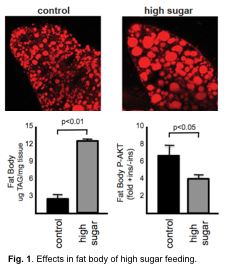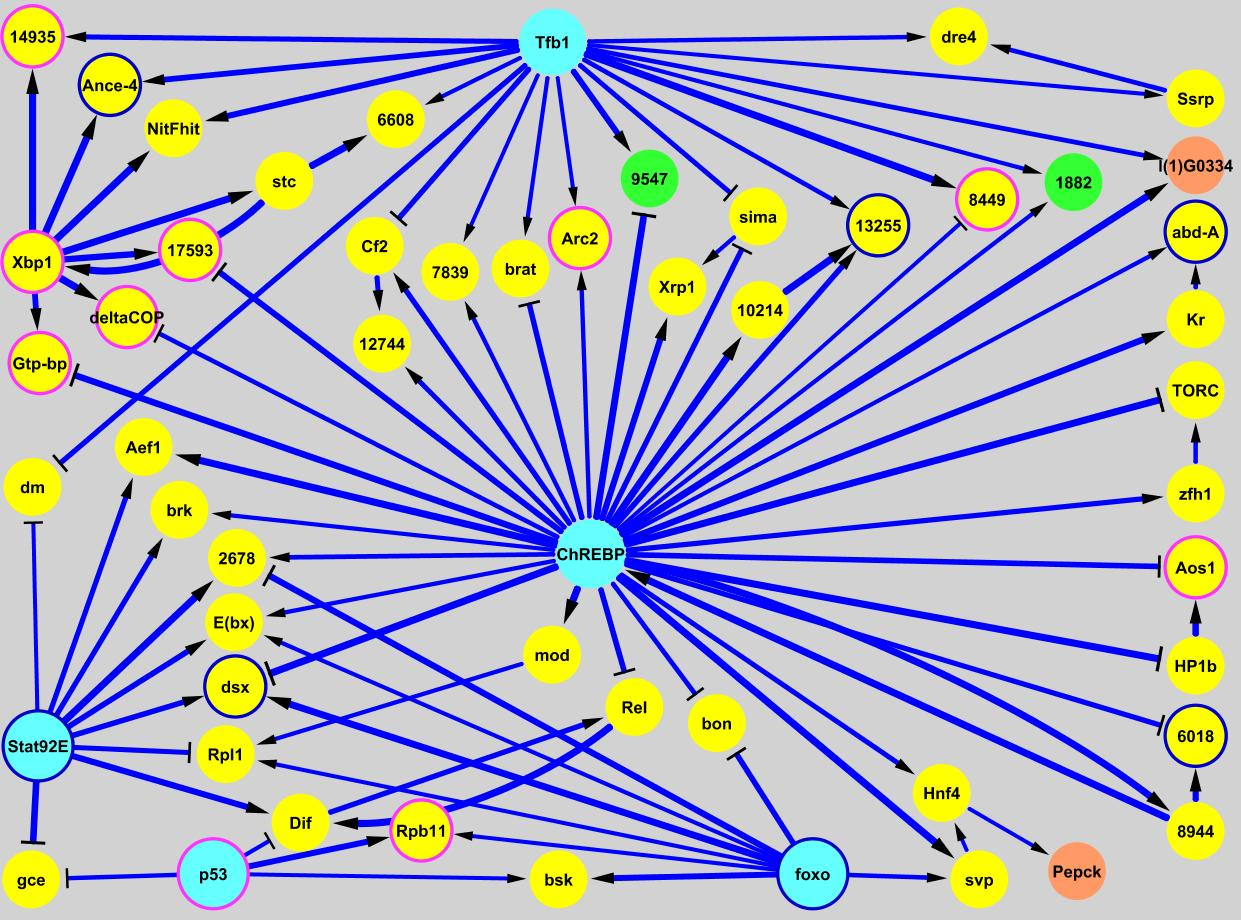Research
Regulatory Network Modeling of Diet-induced Diabetes in the Fly

Effects in fat body of high sugar feeding.
Diabetes mellitus is the 5th leading cause of death worldwide, and the rate of diabetes continues to increase. Type 2 or insulin-resistant diabetes (T2DM) is accompanied by a host of pathologies, including obesity, cardiovascular disease, fatty liver, neuropathy, retinopathy, and nephropathy. Insulin resistance develops as a result of several factors, including genetic susceptibility, obesity, and nutrition. Clinical studies of individuals fed high carbohydrate diets and epidemiologic data suggest that high sugar diets can lead to insulin resistance and the development of T2DM. The mechanisms by which this occurs are not well understood and are the focus of this project.
This project is innovative in several ways: (1) use of the fruit fly as a model for diet induced diabetes, (2) application of scalable computational and genomic methods to modeling regulatory networks involved in diet induced diabetes, and (3) application of novel algorithms to reconstruction of gene regulatory networks.
Drosophila provide a simple, genetically tractable model organism in which to dissect the molecular mechanisms of diet-induced T2DM. The long-term goal of this project is to elucidate the pathways by which a high sugar diet leads to T2DM, using the fruit fly as a model system. In this project we aim to identify a set of transcription factors that contribute to or compensate for diet induced insulin resistance, computationally model the gene regulatory networks by which they act, and validate the model by inducing insulin resistance through genetic manipulation in flies and mice fed a normal diet.
Collaborators:
 |
Thomas Baranski, M.D., Ph.D.Website: http://endo.wustl.edu/faculty/baranski.html |
 |
Laura Palanker Musselman, Ph.D. |
Funding:
 |
Children's Discovery InstituteWebsite: http://www.childrensdiscovery.org/content/ |




